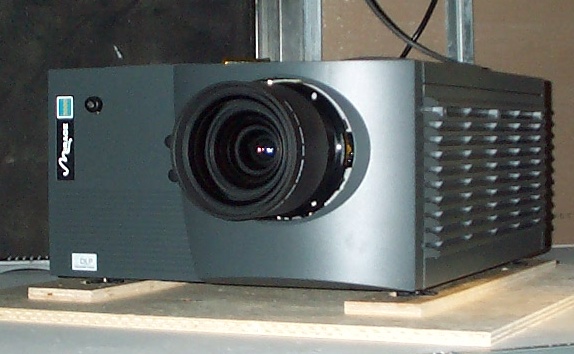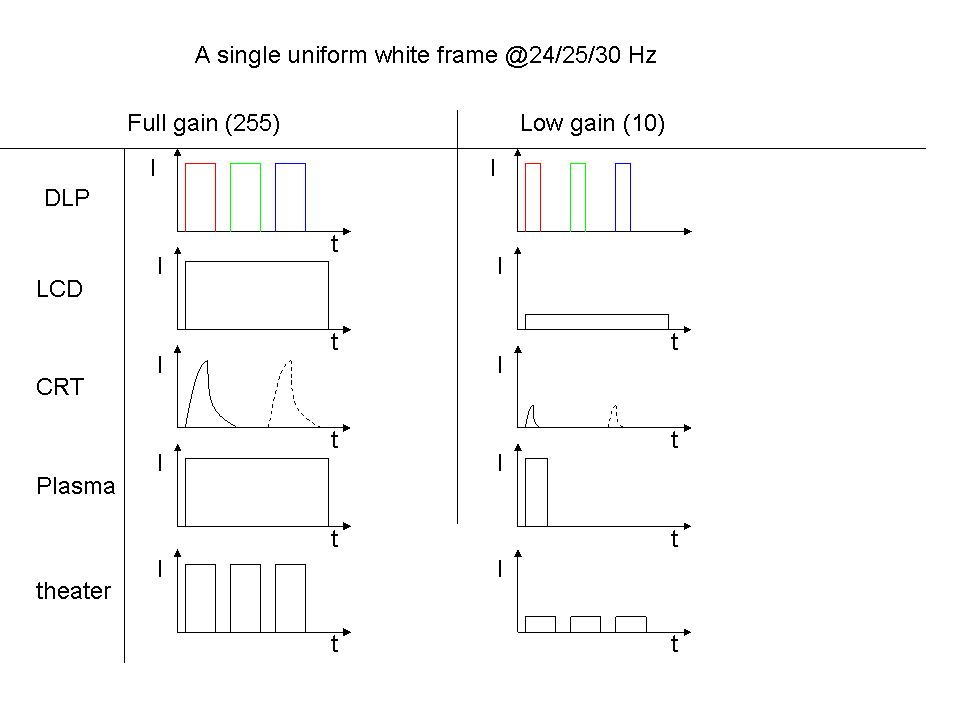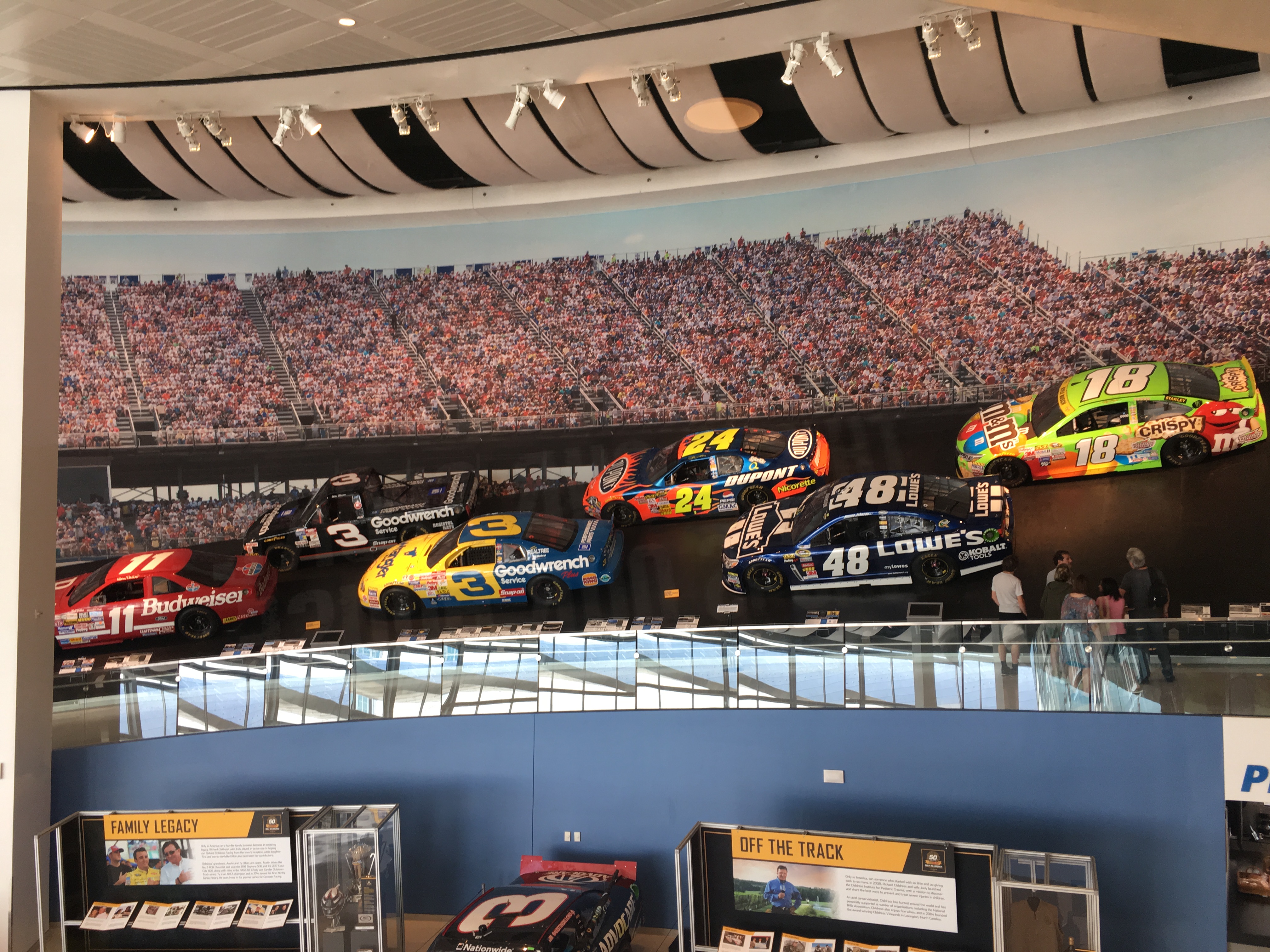|
MicroTiles
MicroTiles are discontinued modular rear projection cube units designed, developed and marketed by Christie Digital. The building-block nature of the system made the configuration of the overall screen area and shape flexible. This allowed for simple traditional rectangular displays, and more complex non-standard shapes. MicroTile units have sensors to detect whether there is another unit next to it, allowing the display controller to automatically determine the tile layout and the size and magnification of the video picture to be displayed across the screen area. Launch The system was in development for two years before being launched. It was first publicly announced during an SEGD conference in New York on 11 November 2009. The official launch event was at the Touch nightclub in Manhattan, New York, on 9 December 2009. The launch in Europe was at thISEtrade show in Amsterdam, 2–4 February 2010. Following North America and Europe, the system was launched in Japan on 22 Ap ... [...More Info...] [...Related Items...] OR: [Wikipedia] [Google] [Baidu] |
University Of Waterloo Stratford Campus
The Stratford School of Interaction Design and Business, also known as the University of Waterloo Stratford School and formerly the University of Waterloo Stratford Campus, is a satellite campus of the University of Waterloo located in Stratford, Ontario, Canada. Founded in June 2009, the University of Waterloo Stratford School is part of the Faculty of Arts, established to provide programs that focus on digital media, interaction design, digital technologies, content creation and user experience within a business context. History On 16 October 2006, the city council of the City of Stratford authorized Mayor Dan Mathieson to sign a memorandum of agreement with the Stratford Festival and the University of Waterloo to explore the possibility of having a liberal arts college located in Stratford. The Province of Ontario granted $10 million to the University of Waterloo Stratford Stratford Campus on 26 March 2008. The following day, Waterloo-based enterprise software company ... [...More Info...] [...Related Items...] OR: [Wikipedia] [Google] [Baidu] |
Christie (company)
Christie is an audiovisual company headquartered in Cypress, California. History Christie was founded in 1929 by S.L. Christie in California. It made a name for itself as a manufacturer of 35mm film movie projectors, lamp houses, lamp consoles and film platter systems. It acquired the Kitchener, Ontario-based digital projection business of Electrohome in 1999. Christie was the first licensee of Texas Instruments' Digital Light Processing technology. As of 2019, more than 65,000 Christie projectors have been installed worldwide, powering 10 million screenings. Christie acquired Vista Controls Systems in 2007, makers of video processing systems, including the Spyder. In 2009, Christie launched MicroTiles, modular 16" × 12" (408 mm × 306 mm) LED-powered DLP-based units that can be built together into a large video wall-style display. In 2013, Christie launched the Matrix StIM WQ and Matrix SIM WQ projectors. These projectors were designed for simulation and training applica ... [...More Info...] [...Related Items...] OR: [Wikipedia] [Google] [Baidu] |
Digital Light Processing
Digital Light Processing (DLP) is a set of chipsets based on optical micro-electro-mechanical technology that uses a digital micromirror device. It was originally developed in 1987 by Larry Hornbeck of Texas Instruments. While the DLP imaging device was invented by Texas Instruments, the first DLP-based projector was introduced by Digital Projection Ltd in 1997. Digital Projection and Texas Instruments were both awarded Emmy Awards in 1998 for the DLP projector technology. DLP is used in a variety of display applications from traditional static displays to interactive displays and also non-traditional embedded applications including medical, security, and industrial uses. DLP technology is used in DLP front projectors (standalone projection units for classrooms and business primarily), DLP rear projection television sets, and digital signs. It is also used in about 85% of digital cinema projection, and in additive manufacturing as a light source in some printers to cure resi ... [...More Info...] [...Related Items...] OR: [Wikipedia] [Google] [Baidu] |
Christie MicroTiles Logo
Christie can refer to: People: * Christie (given name) * Christie (surname) * Clan Christie Other uses: * Christie's, the auction house * Christie, the Canadian division of Nabisco * Christie (TTC), subway station in Toronto, Ontario, Canada * Christie (company), a digital projection company * Christie (band), UK rock band * Christie Hospital, Manchester, England, researches and treats cancer ** The Christie NHS Foundation Trust, manages the Christie Hospital * Christie suspension, vehicle (tank) suspension system invented by U.S. engineer Walter Christie * Christie Organ, a brand of theatre pipe organ * ''Get Christie Love!'', an American crime drama TV series starring Teresa Graves * Christie (Dead or Alive), a video game character in ''Dead or Alive 3'' See also * Christy (other) Christy may refer to: * Christy (given name) * Christy (surname) * ''Christy'' (novel), by Catherine Marshall * Christy (towel manufacturer), a UK textile firm established in 1850 ... [...More Info...] [...Related Items...] OR: [Wikipedia] [Google] [Baidu] |
Comparison Of Display Technology
This is a comparison of various properties of different display technologies. General characteristics Major technologies are Cathode ray tube, CRT, LCD and its derivatives (Quantum dot display, LED backlit LCD, WLCD, OLCD), Plasma display, Plasma, and OLED and its derivatives (Transparent OLED, PMOLED, AMOLED). An emerging technology is Micro LED and cancelled and now obsolete technologies are Surface-conduction electron-emitter display, SED and Field emission display, FED. Temporal characteristics Different display technologies have vastly different temporal characteristics, leading to perceptual differences for motion, flicker, etc. The figure shows a sketch of how different technologies present a single white/grey frame. Time and intensity is not to scale. Notice that some have a fixed intensity, while the illuminated period is variable. This is a kind of pulse-width modulation. Others can vary the actual intensity in response to the input signal. *Single-chip DLPs us ... [...More Info...] [...Related Items...] OR: [Wikipedia] [Google] [Baidu] |
NASCAR Hall Of Fame
The NASCAR Hall of Fame, located in Charlotte, North Carolina, honors drivers who have shown expert skill at NASCAR driving, all-time great crew chiefs and owners, broadcasters and other major contributors to competition within the sanctioning body. History and construction NASCAR committed to building a Hall of Fame and on March 6, 2006, the City of Charlotte was selected as the location. Ground was broken for the $160 million facility on January 26, 2007, and it officially opened on May 11, 2010, with the inaugural class inducted the day following the 2010 NASCAR Sprint All-Star Race. In addition to the Hall of Fame, the NASCAR Plaza, a 20-story office building, opened in May 2009. The structure serves as the home of Hall of Fame-related offices, NASCAR Digital Media, NASCAR's licensing division, as well as NASCAR video game licensee Dusenberry Martin Racing (now known as 704Games). Other tenants include the Charlotte Regional Partnership and Lauth Property Group. Richard ... [...More Info...] [...Related Items...] OR: [Wikipedia] [Google] [Baidu] |
The Colbert Report
''The Colbert Report'' ( ) is an American late-night talk and news satire television program hosted by Stephen Colbert that aired four days a week on Comedy Central from October 17, 2005, to December 18, 2014, for 1,447 episodes. The show focused on a fictional anchorman character named Stephen Colbert, played by his real-life namesake. The character, described by Colbert as a "well-intentioned, poorly informed, high-status idiot", is a caricature of televised political pundits. Furthermore, the show satirized conservative personality-driven political talk programs, particularly Fox News's '' The O'Reilly Factor''. ''The Colbert Report'' is a spin-off of Comedy Central's '' The Daily Show'', where Colbert was a correspondent from 1997 to 2005. The program, created by Colbert, Jon Stewart, and Ben Karlin, lampooned current events and American political happenings. The show's structure consisted of an introductory monologue and a guest interview, in which the Colbert char ... [...More Info...] [...Related Items...] OR: [Wikipedia] [Google] [Baidu] |
DisplayPort
DisplayPort (DP) is a digital display interface developed by a consortium of PC and chip manufacturers and standardized by the Video Electronics Standards Association (VESA). It is primarily used to connect a video source to a display device such as a computer monitor. It can also carry audio, USB, and other forms of data. DisplayPort was designed to replace VGA, FPD-Link, and Digital Visual Interface (DVI). It is backward compatible with other interfaces, such as HDMI and DVI, through the use of either active or passive adapters. It is the first display interface to rely on packetized data transmission, a form of digital communication found in technologies such as Ethernet, USB, and PCI Express. It permits the use of internal and external display connections. Unlike legacy standards that transmit a clock signal with each output, its protocol is based on small data packets known as ''micro packets'', which can embed the clock signal in the data stream, allowing higher resoluti ... [...More Info...] [...Related Items...] OR: [Wikipedia] [Google] [Baidu] |
Ring Network
A ring network is a network topology in which each node connects to exactly two other nodes, forming a single continuous pathway for signals through each node – a ring. Data travels from node to node, with each node along the way handling every packet. Rings can be unidirectional, with all traffic travelling either clockwise or anticlockwise around the ring, or bidirectional (as in SONET/SDH). Because a unidirectional ring topology provides only one pathway between any two nodes, unidirectional ring networks may be disrupted by the failure of a single link. A node failure or cable break might isolate every node attached to the ring. In response, some ring networks add a "counter-rotating ring" (C-Ring) to form a redundant topology: in the event of a break, data are wrapped back onto the complementary ring before reaching the end of the cable, maintaining a path to every node along the resulting C-Ring. Such "dual ring" networks include the ITU-T's PSTN telephony systems netwo ... [...More Info...] [...Related Items...] OR: [Wikipedia] [Google] [Baidu] |
WUXGA
The graphics display resolution is the width and height dimension of an electronic visual display device, measured in pixels. This information is used for electronic devices such as a computer monitor. Certain combinations of width and height are standardized (e.g. by VESA) and typically given a name and an initialism that is descriptive of its dimensions. A graphics display resolution can be used in tandem with the size of the graphics display to calculate pixel density. An increase in the pixel density often correlates with a decrease in the size of individual pixels on a display. Overview by vertical resolution and aspect ratio Aspect ratio The favored aspect ratio of mass-market display industry products has changed gradually from 4:3, then to 16:10, then to 16:9, and is now changing to 18:9 for smartphones. The 4:3 aspect ratio generally reflects older products, especially the era of the cathode ray tube (CRT). The 16:10 aspect ratio had its largest use in the ... [...More Info...] [...Related Items...] OR: [Wikipedia] [Google] [Baidu] |
Digital Visual Interface
Digital Visual Interface (DVI) is a video display interface developed by the Digital Display Working Group (DDWG). The digital interface is used to connect a video source, such as a video display controller, to a display device, such as a computer monitor. It was developed with the intention of creating an industry standard for the transfer of digital video content. This interface is designed to transmit uncompressed digital video and can be configured to support multiple modes such as DVI-A (analog only), DVI-D (digital only) or DVI-I (digital and analog). Featuring support for analog connections, the DVI specification is compatible with the VGA interface. This compatibility, along with other advantages, led to its widespread acceptance over competing digital display standards Plug and Display (P&D) and Digital Flat Panel (DFP). Although DVI is predominantly associated with computers, it is sometimes used in other consumer electronics such as television sets and DVD playe ... [...More Info...] [...Related Items...] OR: [Wikipedia] [Google] [Baidu] |






